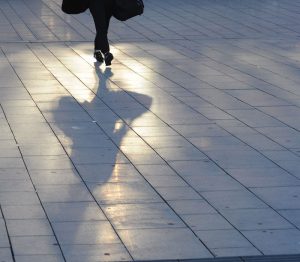Some tips to improve your photos
Would you like to improve your photography? Go on! It doesn’t necessarily require much expensive equipment, or to wait for your next voyage to a country with a colourful culture. In fact, before your next family event or trip abroad, it can be better to experiment at home, both to try out new methods and also because it is more carbon-friendly. Here are a few tips you could try right away:
1. Go out early in the morning or at sunset

Take photos after sunrise and before sunset, during the golden hour. In the city, the reflections of the sun can cast even more interesting shadows than you might expect!
Photography is about light, and the light can be very interesting close to sunrise or sunset. The golden hour is the time when the sun is low, and long rays reach across the earth, casting interesting shadows. In the evening, the light is also flatteringly golden. It can be a great time for nature photos, and also for portraits.
2. Get up earlier or stay later, for the blue hour
Before the sun rises, and after it sets, the sky slowly darkens from blue to black. The deep blue of the evening sky can be a fabulous backdrop to photos. In addition, the combination of blue-ish natural light and the colours or artificial light, can make for some interesting photos. Just bring a tripod or some way to stabilize your camera, as you are likely to need a long exposure.
Yes, actually, as a second tip, I would recommend not pushing up your ISO on your digital camera – stay within the native range and avoid too much visual noise disturbing the quiet serenity of an evening landscape shot.
3. Manage the direction of the light
Whether it is natural light or an off-camera flash, you can manage the direction of the light. If your light source is the sun, you manage the light by where you place yourself and your camera. Consider shooting at an angle to the light, or against the light (so your autumn leaves glow softly, with the sun coming through their brilliant colours).
If you are shooting against the light, pay attention to the effect of too-direct light on your image – shade the end of your lens with a sun hood or your hand to make sure the image is as clear and brilliant as you want.
4. Composition
Light can be diagonal in your image, or the lines of the scene itself. Part of the skill of photography is the skill of planning what will be in the scene photographed – and what not. You don’t necessarily need a zoom lens to choose the scene – moving yourself and the camera in and out can also work! Or shooting from low or high.
The reason that composition rules work, is that our human brains have some hardwiring about what we see as attractive. There are a variety of rules, and some seem to contradict one another, such as the rules of symmetry and the rule of thirds. Choose one or two rules to concentrate on, and spend a day making all your compositions incorporate that rule. So, for example, for a day, consciously consider diagonal every time you take a picture. And then choose another composition rule, such as the rule of thirds. (Some cameras have settings in which you can view a compositional aid in your viewfinder or screen.) Once you have practised consciously incorporating composition, it will become easier to select the one that most suits your scene.
There are more tips to come; I hope you will try these three right away! Happy shooting!


